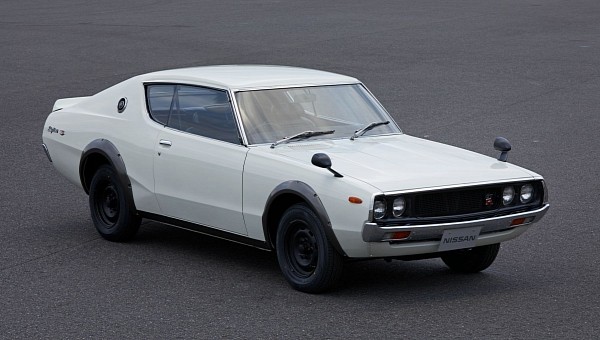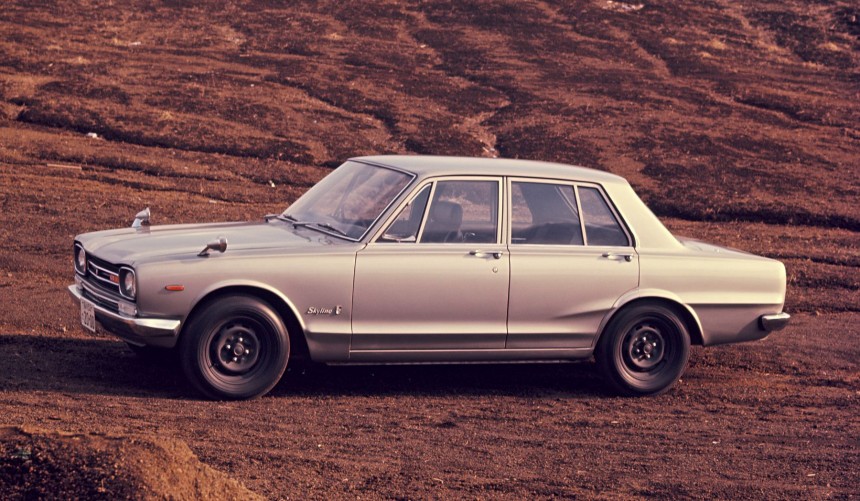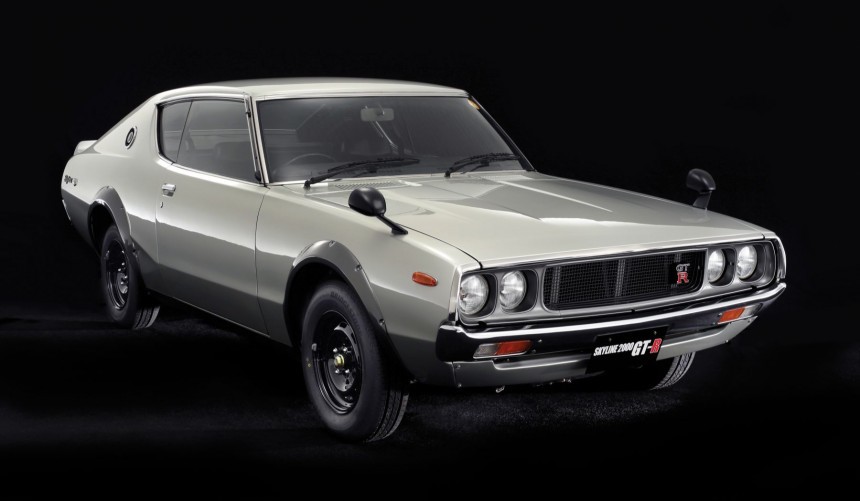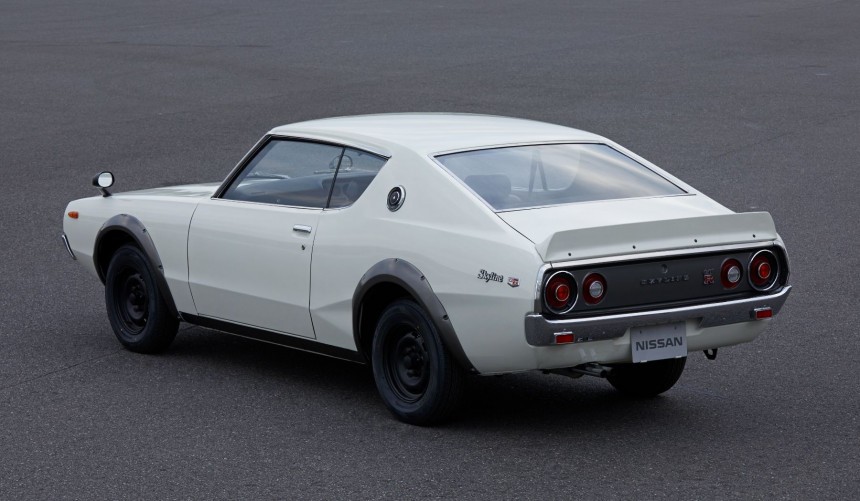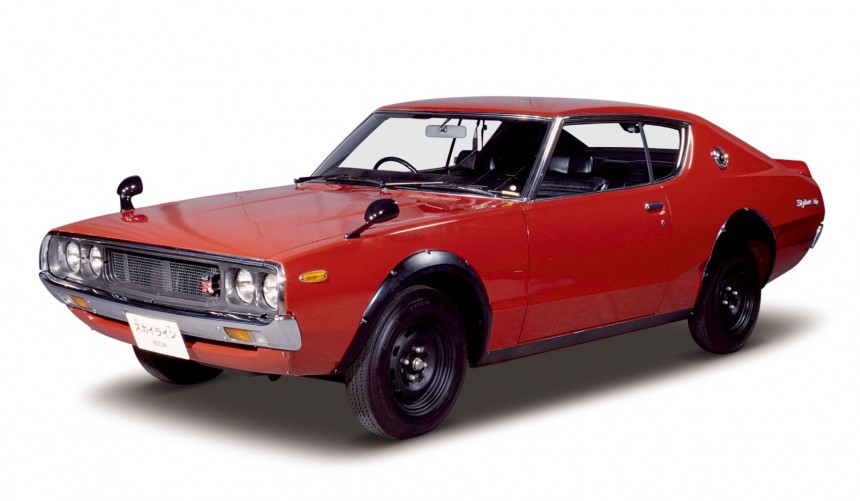Unlike its predecessor or its successors, the second-generation Skyline GT-R wasn’t an innovative high-performance beast. However, it’s just as legendary thanks mainly to its limited production figures.
While the GT-R became a stand-alone model in 2002, when the R35 was introduced, the moniker’s story is closely related to one of the Japanese manufacturer’s most long-standing ranges: the Skyline.
The model is still around today, thirteen generations later, but it debuted more than half a century ago and wasn’t initially a Nissan. The year was 1957 and at the Takarazuka Theater, in Hibiya, Tokyo, the Prince Motor Company unveiled a brand-new car that had nothing to do with high performance. Instead, it was a small luxury vehicle that was conceived for the country’s middle class.
It was replaced by an improved model in 1964 and since Prince merged with Nissan two years later, the second generation became known as the Nissan Prince Skyline.
In 1968, the third generation, codenamed C10, hit the streets. Although it was also fully developed by Prince, this iteration would be the first Skyline to be marketed without Prince badges.
This generation earned a place in the automotive history books thanks to the high-performance variant introduced in February 1969. Internally designated PGC10 and sold as the Skyline 2000GT-R, it looked much like the stock sedan, yet it featured a bunch of motorsport-derived goodies such as a revamped suspension system, front disc brakes, a limited-slip differential, and last but not least, a 160-hp, six-cylinder derived from the unit that powered the R380 race cars.
With a compact chassis, an overall weight of 2,425.1 lb (1,100 kg), and the aforementioned race-bred engine sending an adequate amount of power to the rear wheels through a five-speed manual, it was praised for its raw nature and thrilling driving experience.
Followed by a two-door coupe version (KPGC10) released in 1971, the first Skyline GT-R was extremely popular in Japan, where it earned the nickname Hakosuka – a combination of the Japanese word for box (hako) and the local abbreviation for Skyline (Suka). It was manufactured until 1972, in 1,945 examples, becoming a legend both on the road and the track, where it racked up 49 consecutive victories in four years of racing.
Encouraged by the success of the first high-performance model, Nissan executives greenlight the development of a successor on the backbone of the new, fourth-generation Skyline (C110). Thus, at the 1972 Tokyo Motor show, the company unveiled the second iteration of the Skyline GT-R, codenamed KPGC110.
Also designed by the legendary Shinichiro Sakurai, the engineer who was involved in conceiving every single Skyline model since the first one appeared back in the 1950s, the new GT-R received a reworked body. Much like the most successful muscle cars in the U.S., it was a two-door, fastback coupe-style structure that made the car look a lot sportier than its predecessor.
Like the Hakosuka, the new model also received a unique nickname inspired by a series of commercials created to promote the car. The ads featured a young Western-looking couple named Ken and Mary who drove it through Japan’s most scenic areas. Ken and Mary became Kenmeri, the nickname that’s synonymous with the second-gen Skyline GT-R to this day.
Although it featured a much more appealing body and was based on an improved chassis, the Kenmeri came with much of the same hardware as its predecessor. A revamped suspension and four-wheel disc brakes returned, but they were in no way better than what the previous generation offered.
Under the hood, the S20 inline-six was carried over without any significant upgrades. That meant an identical output for a car that was now almost 100 lb (45.3 kg) heavier. While the engine was still impressive, it didn’t make the Kenmeri faster.
Apart from the bodywork, the only upgrade that the second-gen received was a refined, more luxurious interior. This was a nice addition, but with the same powerplant carried over and no significant chassis upgrades, it didn’t provide a much-improved driving experience, which was what enthusiasts really expected from the new model.
Because it lacked major improvements, most first-gen owners, as well as those thinking about buying a GT-R, avoided the Kenmeri. While the first category saw no point in selling their Hakosuka and upgrading to the new model, many potential buyers chose to get a first-gen example from dealerships that still had one in stock.
To make matters worse for Nissan, the 1973 oil crisis, which led to the extinction of thoroughbred muscle cars in the U.S., also hit Japan hard. This meant that interest in the new high-performance car diminished even further, so just three months after kicking off production, the company pulled the plug on the struggling model. In the end, just 197 Kenmeris were built. Excluding limited-edition variants, this figure makes the second generation the rarest of all GT-Rs.
Even though it was a commercial failure and was initially perceived as a lackluster follow-up to the legendary Hakosuka, the KPGC110 would enjoy a monumental rise in popularity four decades later thanks to its low-volume production, as well as the success of its descendants.
Currently, an example in good shape is valued well past the $200,000 mark, while low-mileage, pristine-condition cars can fetch up to $400,000, which is close to the value of an R34 in similar condition.
While seeing an authentic Kenmeri in real life is almost as hard as crossing paths with an actual unicorn, you can take a virtual tour of one in the YouTube video below by WasabiCars.
The model is still around today, thirteen generations later, but it debuted more than half a century ago and wasn’t initially a Nissan. The year was 1957 and at the Takarazuka Theater, in Hibiya, Tokyo, the Prince Motor Company unveiled a brand-new car that had nothing to do with high performance. Instead, it was a small luxury vehicle that was conceived for the country’s middle class.
It was replaced by an improved model in 1964 and since Prince merged with Nissan two years later, the second generation became known as the Nissan Prince Skyline.
The birth of a legend
This generation earned a place in the automotive history books thanks to the high-performance variant introduced in February 1969. Internally designated PGC10 and sold as the Skyline 2000GT-R, it looked much like the stock sedan, yet it featured a bunch of motorsport-derived goodies such as a revamped suspension system, front disc brakes, a limited-slip differential, and last but not least, a 160-hp, six-cylinder derived from the unit that powered the R380 race cars.
With a compact chassis, an overall weight of 2,425.1 lb (1,100 kg), and the aforementioned race-bred engine sending an adequate amount of power to the rear wheels through a five-speed manual, it was praised for its raw nature and thrilling driving experience.
Followed by a two-door coupe version (KPGC10) released in 1971, the first Skyline GT-R was extremely popular in Japan, where it earned the nickname Hakosuka – a combination of the Japanese word for box (hako) and the local abbreviation for Skyline (Suka). It was manufactured until 1972, in 1,945 examples, becoming a legend both on the road and the track, where it racked up 49 consecutive victories in four years of racing.
The Kenmeri GT-R
Also designed by the legendary Shinichiro Sakurai, the engineer who was involved in conceiving every single Skyline model since the first one appeared back in the 1950s, the new GT-R received a reworked body. Much like the most successful muscle cars in the U.S., it was a two-door, fastback coupe-style structure that made the car look a lot sportier than its predecessor.
Like the Hakosuka, the new model also received a unique nickname inspired by a series of commercials created to promote the car. The ads featured a young Western-looking couple named Ken and Mary who drove it through Japan’s most scenic areas. Ken and Mary became Kenmeri, the nickname that’s synonymous with the second-gen Skyline GT-R to this day.
Not the follow-up that enthusiasts were expecting
Under the hood, the S20 inline-six was carried over without any significant upgrades. That meant an identical output for a car that was now almost 100 lb (45.3 kg) heavier. While the engine was still impressive, it didn’t make the Kenmeri faster.
Apart from the bodywork, the only upgrade that the second-gen received was a refined, more luxurious interior. This was a nice addition, but with the same powerplant carried over and no significant chassis upgrades, it didn’t provide a much-improved driving experience, which was what enthusiasts really expected from the new model.
From commercial failure to one of the rarest, most sought-after GT-Rs
To make matters worse for Nissan, the 1973 oil crisis, which led to the extinction of thoroughbred muscle cars in the U.S., also hit Japan hard. This meant that interest in the new high-performance car diminished even further, so just three months after kicking off production, the company pulled the plug on the struggling model. In the end, just 197 Kenmeris were built. Excluding limited-edition variants, this figure makes the second generation the rarest of all GT-Rs.
Even though it was a commercial failure and was initially perceived as a lackluster follow-up to the legendary Hakosuka, the KPGC110 would enjoy a monumental rise in popularity four decades later thanks to its low-volume production, as well as the success of its descendants.
Currently, an example in good shape is valued well past the $200,000 mark, while low-mileage, pristine-condition cars can fetch up to $400,000, which is close to the value of an R34 in similar condition.
While seeing an authentic Kenmeri in real life is almost as hard as crossing paths with an actual unicorn, you can take a virtual tour of one in the YouTube video below by WasabiCars.
